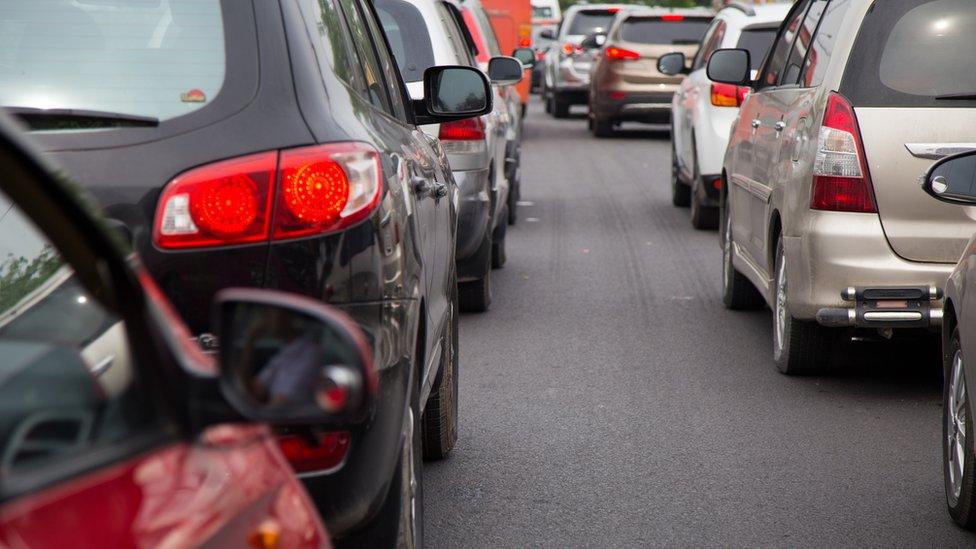Small improvement for polluted streets
- Published
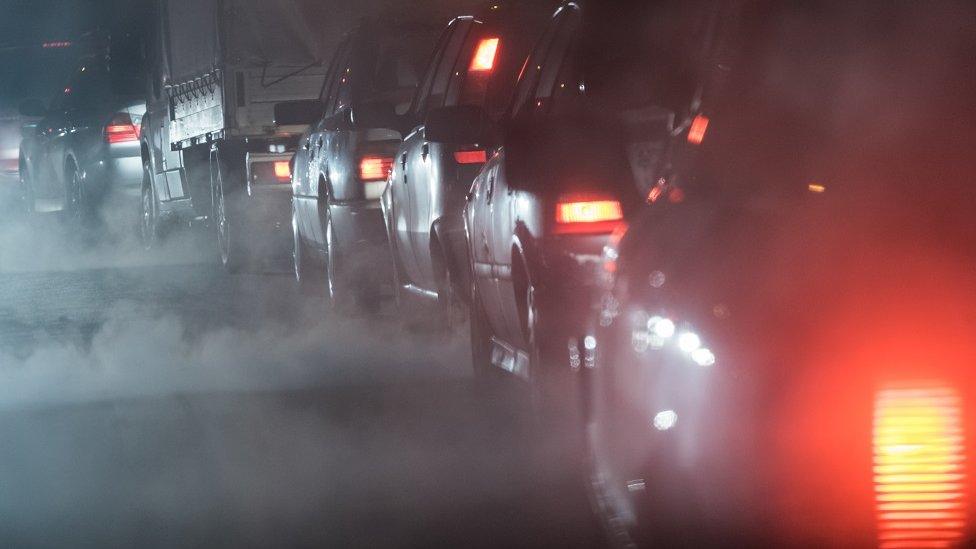
Air quality has improved slightly on Scotland's most polluted streets, according to figures from Friends of the Earth (FoE) Scotland.
But the data suggests the total number of official "pollution zones", where levels regularly exceed legal limits, has remained static at 38.
The Scottish government said it was doing all it can to protect people from the effects of air pollution.
It has committed to measures including phasing out petrol and diesel cars.
Hope Street in Glasgow remains the most polluted street for nitrogen dioxide but levels have decreased from 65mcg per cubic metre to 58.
Salamander Street in Edinburgh is the worst for Particulate Matter, overtaking Queensferry Road in the capital and Atholl Street in Perth.

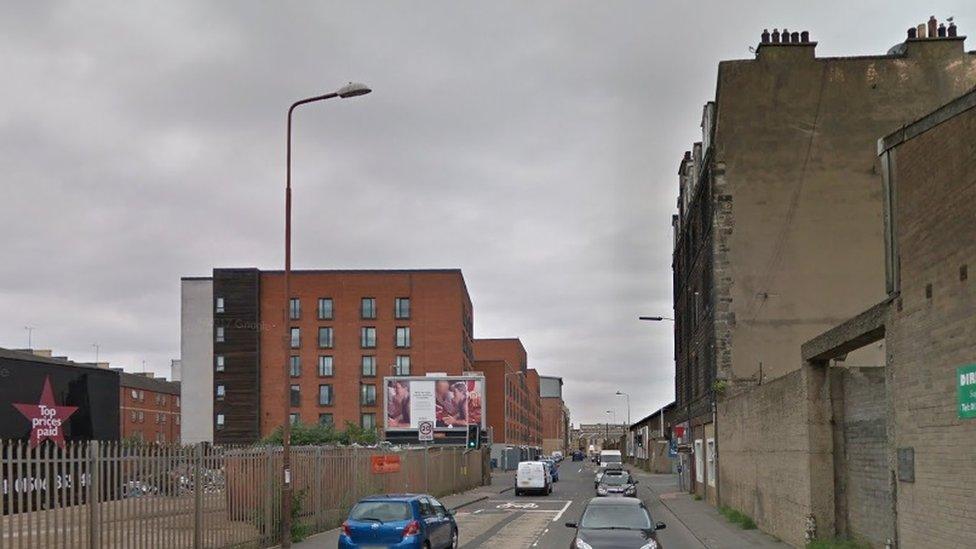
Salamander Street in Edinburgh tops the poll for the most particulate matter
Six most polluted streets for particulate matter in 2017
Edinburgh Salamander St - 23
Edinburgh Queensferry Road - 23
Perth Atholl Street - 21
Glasgow Clarence Drive- 19
Edinburgh Glasgow Road - 19
Glasgow Dumbarton Road - 19
Figures in mcg per cubic metre. The Scottish air quality objective is 18 mcg per cubic metre.

The environmental group said its figures still demonstrate the importance of low emissions zones which are planned for the end of the year in Glasgow and by 2020 in Dundee, Edinburgh and Aberdeen.
Emilia Hanna, FoE Scotland's air pollution campaigner, said: "Once again, streets in Scotland have dangerous levels of toxic air pollution which are breaking legal limits.
"The situation across Scotland is potentially showing some slow signs of improvements but filthy streets continue to poison our lungs nearly a decade after a legal deadline.
"Scotland's first low emission zone will be in Glasgow by the end of this year, and this will be an important test of commitment to address this problem. The rest of Scotland is looking to Glasgow to set a high standard with its low emission zone.
"Glasgow City Council must ensure that its proposed LEZ restricts the most polluting buses, vans and lorries by the end of this year, with cars and taxis restricted by 2020."
Three roads in Aberdeen have fallen out of the league tables of the worst offenders with Lochee Road in Dundee newly entering the top six along with Clarence Drive in Glasgow.
High Street in Crieff, perhaps one of the most surprising roads in the list for previous year, has also dropped out.
The raw data doesn't provide an explanation for the change which could be down to the weather or mitigation measures introduced by local authorities.


Hope Street in Glasgow tops the list of the most polluted streets in Scotland
Six most polluted streets for Nitrogen Dioxide in 2017
Glasgow's Hope Street - 58
Edinburgh's St John's Road - 50
Glasgow's Dumbarton Road - 43
Dundee's Seagate - 43
Dundee's Lochee Road - 42
Edinburgh's Queensferry Road - 41
Figures in mcg per cubic metre. The European Ambient Air Quality Directive set a limit for NO2 of 40 mcg per cubic metre.

A Scottish government spokesman said it was committed to introducing low emission zones into Scotland's biggest cities between 2018 and 2020.
He added: "We will continue to work with industry to phase out the need for new petrol and diesel cars and vans by 2032.
"We have invested more than £210m in active travel since the start of the 2011 spending review, and the most recent programme for government announced that we would double the active travel budget from £40m to £80m in 2018-19.
"This will allow us to continue to build an Active Nation, boosting investment in walking and cycling and putting active travel at the heart of our transport planning.
"We have created one of the most comprehensive electric vehicle charging networks in Europe with more than 1,600 charging bays, an interest free loan scheme to support low emission vehicle ownership, and a £14.5m Green Bus Fund, which has seen the introduction of 300 low emission buses to the Scottish fleet.
"Our Cleaner Air for Scotland strategy sets out an ambitious programme of action to promote air quality and Scotland is the first country in Europe to pass legislation based on World Health Organisation guidelines for fine particulate matter."
FoE Scotland estimates that 2,500 people die prematurely each year because of air pollution which has been linked to respiratory conditions such as asthma.
The two measures, particulate matter and Nitrogen Dioxide, are both caused by fossil-fuel engines.
- Published31 October 2017
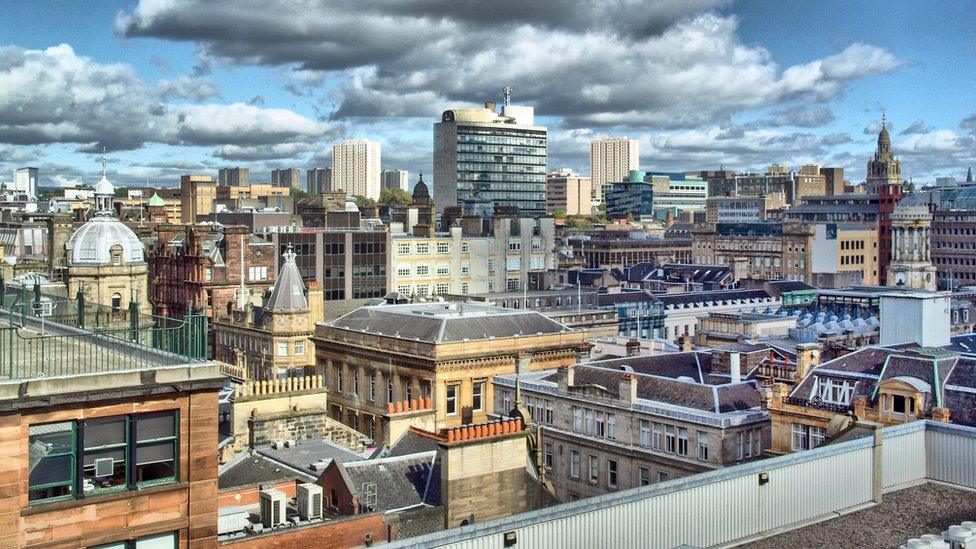
- Published4 July 2017
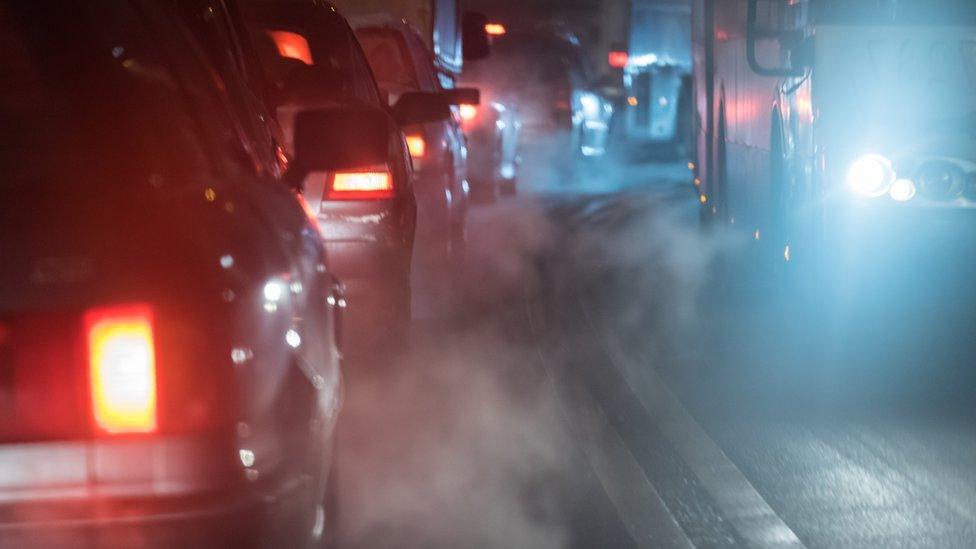
- Published15 January 2017
